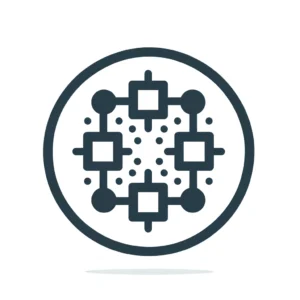“`html
Disclosure: The views and opinions expressed here belong solely to the author and do not represent the views and opinions of crypto.news’ editorial team.
Ethereum Faces a Zero-Knowledge Proof Scaling Challenge
Ethereum, despite its continuous evolution, is at a pivotal moment. The advent of zero-knowledge proofs (ZKPs) is expected to revolutionize blockchain scalability and privacy, with projections estimating up to 90 billion proofs generated annually by 2030. However, Ethereum’s current infrastructure is ill-equipped to handle this surge due to high gas costs and limited block space, making on-chain verification impractical.
What Are Zero-Knowledge Proofs (ZKPs)?
ZKPs are cryptographic tools that enable one party to prove the validity of a statement to another without revealing any underlying data. This technology is rapidly becoming a cornerstone for blockchain scalability and privacy. From powering high-throughput layer-2 solutions like ZK-rollups to enabling privacy-focused decentralized applications (dApps), ZKPs are embedding themselves into the foundation of Web3.
Research suggests that the use of ZKPs will expand into diverse applications, such as client-side proving on mobile devices and AI-driven decentralized finance (DeFi) protocols. This growth underscores the urgency for Ethereum to scale its proof verification capabilities.
Ethereum’s Current Limitations
Ethereum’s main chain cannot accommodate the projected demand for ZKP verification. Even if Ethereum allocated its entire capacity—30 million gas units per block—to verifying ZKPs (with each proof consuming approximately 200,000 gas), it could only process about 150 million proofs annually. This figure represents less than 0.2% of the anticipated 90 billion proofs by 2030.
Gas prices would likely skyrocket, making proof verification prohibitively expensive. While Ethereum’s roadmap includes plans to improve cryptographic functionalities, these updates are progressing slowly, leaving the network unprepared for the imminent demand.
The Alternative: Modular Verification Layers
Ethereum has faced scaling challenges before, and the community has consistently found innovative solutions. A few years ago, rollups emerged as a scaling lifeline but encountered a bottleneck with data availability (DA). Storing transaction data on Ethereum’s layer-1 (L1) was costly and inefficient. This led to the rise of alternative DA layers like Celestia and Avail, which significantly reduced costs by handling data off-chain. These solutions are now integral to Ethereum’s ecosystem.
Similarly, ZKP verification could benefit from alternative layers. Current approaches, such as proof aggregation, batch multiple proofs into a single “super proof” for Ethereum verification. While this reduces costs, it introduces latency, with some batches taking hours or even days to settle. Additionally, aggregators often operate without staked tokens, offering limited accountability.
A modular verification layer, such as zkVerify, provides a blockchain-based alternative. These layers are faster, more cost-effective, and secured by proof-of-stake mechanisms, offering greater security and scalability.
The Cost of Inaction
Without alternative verification methods, Ethereum risks being overwhelmed. Verifying a single Groth16 proof on Ethereum currently costs approximately $10 at moderate gas prices (30 gwei, $1,500 ETH). Extrapolated to 90 billion proofs, this represents a trillion-dollar expense—an unsustainable burden.
Even with aggregation, costs remain volatile due to Ethereum’s gas market. Latency issues also hinder high-throughput use cases like real-time DeFi and blockchain gaming. Critics argue that off-chain verification compromises security, but the current reliance on aggregators already introduces trust assumptions.
Benefits of a Modular Approach
A dedicated verification chain could reduce costs by up to 90%, bypass Ethereum’s gas price spikes, and support native STARK verification. This modular approach not only saves resources but also unlocks new use cases, such as client-side proving. Imagine billions of smartphones generating ZKPs for private identities or microtransactions—this vision is achievable with scalable verification solutions.
Overcoming Resistance to Change
Ethereum’s community has historically resisted off-chain solutions, fearing they could dilute the network’s security. However, the success of alternative DA layers has proven otherwise. Rollups have thrived, transaction fees have decreased, and Ethereum’s ecosystem has expanded.
Similarly, concerns about alternative ZKP verification layers are misplaced. A proof-of-stake-based verification chain with staked tokens and slashing mechanisms provides accountability that aggregators currently lack. This approach aligns with Ethereum’s long-term vision of scalability and trustlessness.
“Trustlessness isn’t binary. Aggregators already introduce trust assumptions, and modular solutions can maintain accountability while scaling Ethereum’s ecosystem.”
Looking Ahead: Scaling for the Future
Ethereum’s modular upgrades, such as the Dencun upgrade (EIP-4844), have demonstrated the network’s ability to evolve. By reducing DA costs with blob transactions, Ethereum has paved the way for similar innovations in ZKP verification. Implementing alternative verification layers is the logical next step.
By 2030, the projected 90 billion proofs could redefine Web3, enhancing privacy, efficiency, and scalability. However, this future depends on proactive efforts to address Ethereum’s current limitations.
Ethereum’s community must embrace modularity to avoid repeating past congestion issues. Alternative ZKP verification layers are not just a temporary fix; they are essential for Ethereum’s continued growth and success in a rapidly evolving blockchain landscape.
About the Author
John Camardo is the VP of Product at Horizen Labs, where he leads zkVerify, a chain-agnostic modular blockchain focused on efficient zero-knowledge proof verification. With over a decade of experience in product management and data-driven innovation, John previously held senior roles at Capital One, where he spearheaded multi-million-dollar opportunities in commercial banking. At Horizen Labs, he has been instrumental in shaping the company’s ZK product strategy. John holds a Bachelor’s degree in Operations Research and Information Engineering from Cornell University and is passionate about building scalable, cryptography-powered systems that address real-world challenges.
“`
























